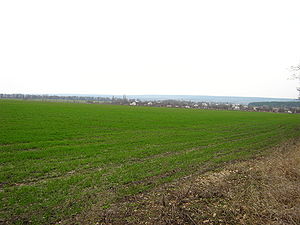
Winter cereals
Encyclopedia

Autumn
Autumn is one of the four temperate seasons. Autumn marks the transition from summer into winter usually in September or March when the arrival of night becomes noticeably earlier....
. They germinate before the winter
Winter
Winter is the coldest season of the year in temperate climates, between autumn and spring. At the winter solstice, the days are shortest and the nights are longest, with days lengthening as the season progresses after the solstice.-Meteorology:...
comes, may partially grow during mild winters or simply persevere under a sufficiently thick snow cover to continue their life cycle in spring. They are harvested earlier than the spring-sown grains of the same type.
Winter forms are known for rye
Rye
Rye is a grass grown extensively as a grain and as a forage crop. It is a member of the wheat tribe and is closely related to barley and wheat. Rye grain is used for flour, rye bread, rye beer, some whiskeys, some vodkas, and animal fodder...
(winter rye/fall rye), wheat
Wheat
Wheat is a cereal grain, originally from the Levant region of the Near East, but now cultivated worldwide. In 2007 world production of wheat was 607 million tons, making it the third most-produced cereal after maize and rice...
(winter wheat
Winter wheat
Winter wheat is a type of wheat that is planted from September to December in the Northern Hemisphere. Winter wheat sprouts before freezing occurs, then becomes dormant until the soil warms in the spring. Winter wheat needs a few weeks of cold before being able to flower, however persistent snow...
/fall wheat), barley
Barley
Barley is a major cereal grain, a member of the grass family. It serves as a major animal fodder, as a base malt for beer and certain distilled beverages, and as a component of various health foods...
(winter barley/fall barley) and triticale
Triticale
Triticale is a hybrid of wheat and rye first bred in laboratories during the late 19th century. The grain was originally bred in Scotland and Sweden. Commercially available triticale is almost always a second generation hybrid, i.e., a cross between two kinds of primary triticales...
(winter triticale).

